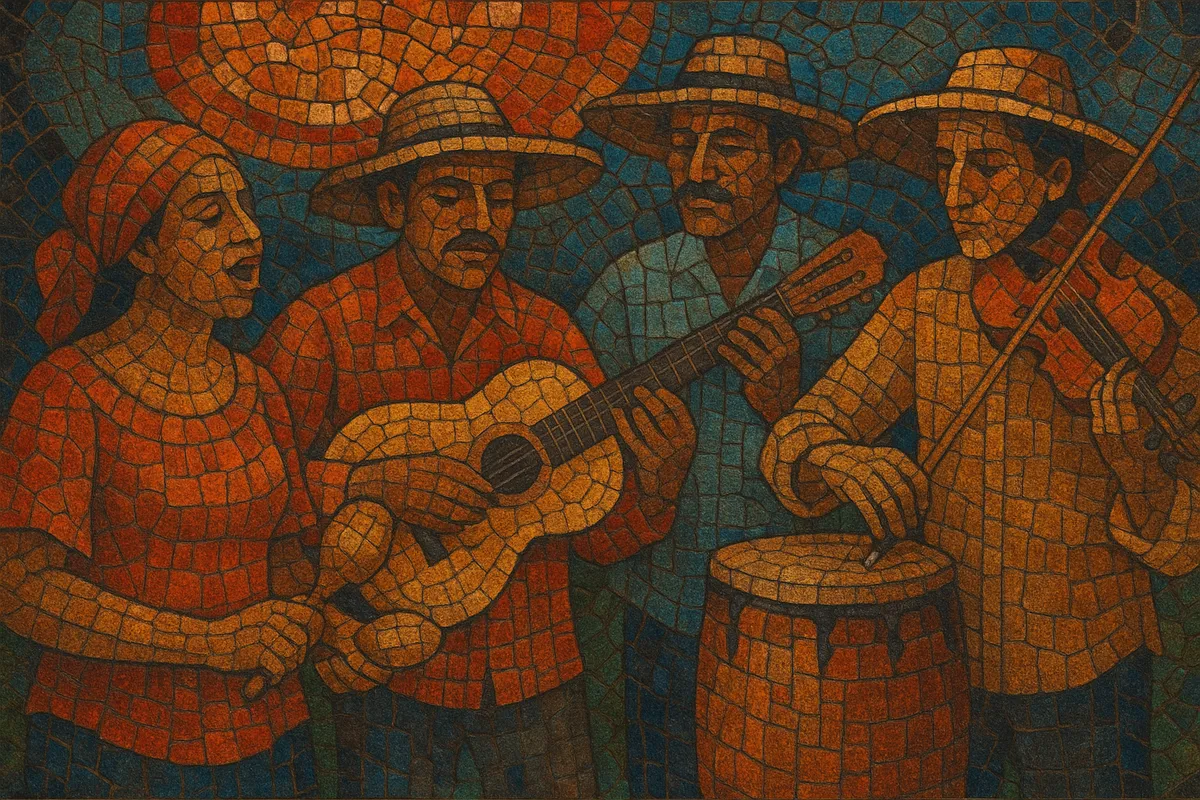Parang is a Spanish-language folk music tradition of Trinidad and Tobago, rooted in the Venezuelan parranda/aguinaldo custom of house-to-house Christmas serenading. Bands travel from home to home during the festive season, singing sacred and secular songs and inviting communal feasting and dance.
Its core sound is acoustic and ensemble-based: the Venezuelan-style cuatro leads the harmony, with guitars, mandolin or bandol, violin, maracas (chac-chac), caja or bombo hand drum, and a box bass providing drive. Melodies are strophic and singable, with strong choruses, call-and-response refrains, and lively dance rhythms.
Stylistically, parang blends Spanish colonial carol traditions (villancico) and Venezuelan folk idioms (e.g., joropo- and waltz-related pulses) with local Creole performance practice. In modern times it has also intersected with calypso and soca, spawning the holiday substyle often called soca parang.
Parang developed in Trinidad and Tobago in the 1800s among cocoa panyols—communities with strong Venezuelan and Spanish ancestry—who carried parranda/aguinaldo house-to-house caroling traditions across the Gulf of Paria. The practice centered on Advent and Christmas, using Spanish lyrics to recount Nativity stories and to serenade households.
Early parang ensembles adopted Venezuelan folk instrumentation: the cuatro, guitars, mandolin/bandol, violin, maracas (chac-chac), and small percussion such as caja/bombo and toc-toc. The music favored strophic songs with memorable refrains, call-and-response singing, and dance-friendly meters related to joropo and waltz. Repertoire included sacred aguinaldos and secular party pieces, alongside topical verses improvised to fit each visit.
Radio, recordings, and community competitions (later formalized by organizations such as the Trinidad & Tobago Parang Association) helped standardize ensembles and broaden audiences. Groups formalized costumes, stagecraft, and multi-part vocal arrangements while keeping the acoustic, portable band identity central to house-to-house performance.
From the late 20th century, parang intersected with calypso and soca, yielding upbeat holiday hits that retain Spanish phrases and parang themes but use soca grooves, electric bass, and drum set. This hybrid did not replace traditional parang; rather, both coexist—traditional serenading thrives in communities, while soca parang dominates seasonal airplay.
Parang remains a hallmark of Trinidad and Tobago’s Christmas season, embodying hospitality, multilingual heritage, and communal celebration. It links the nation’s Spanish/Venezuelan roots with contemporary Caribbean popular culture.


